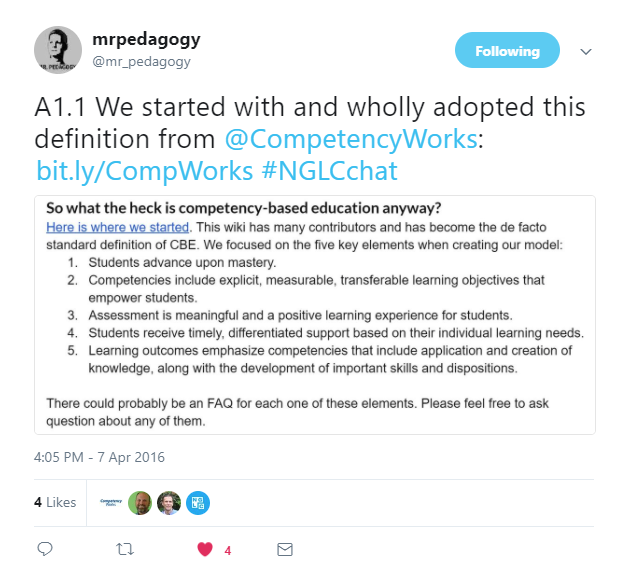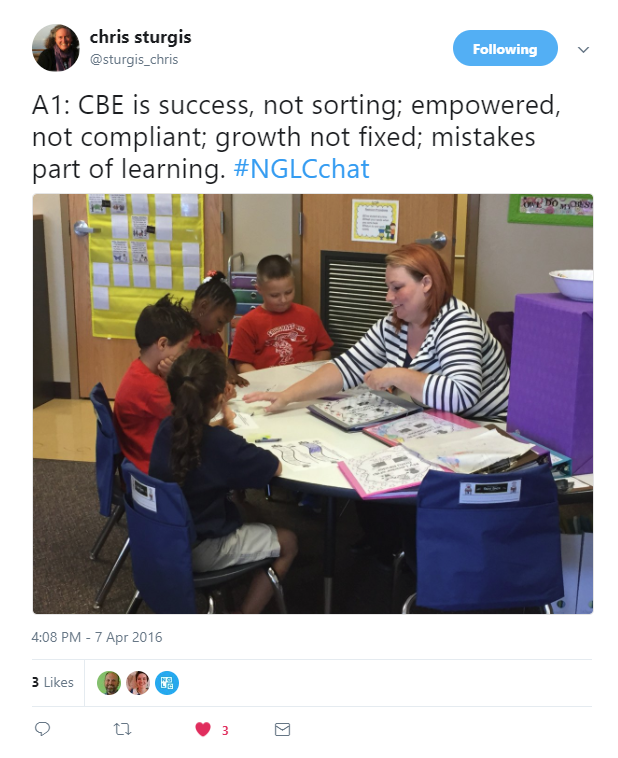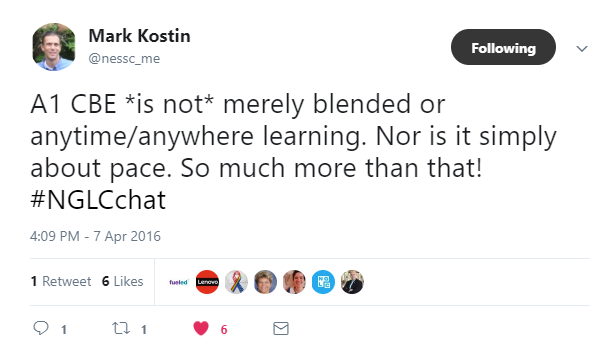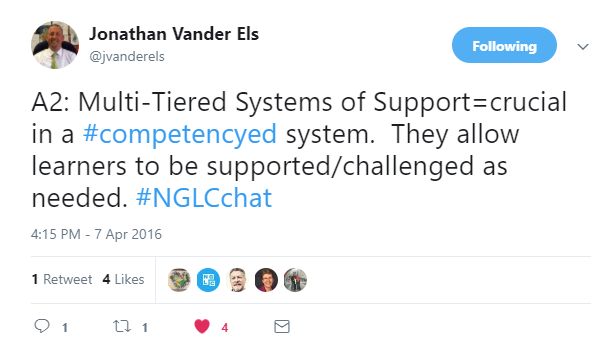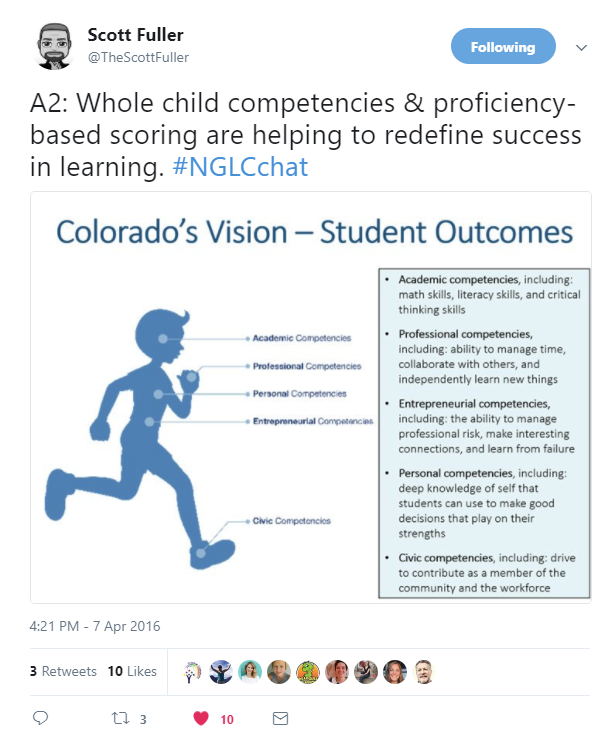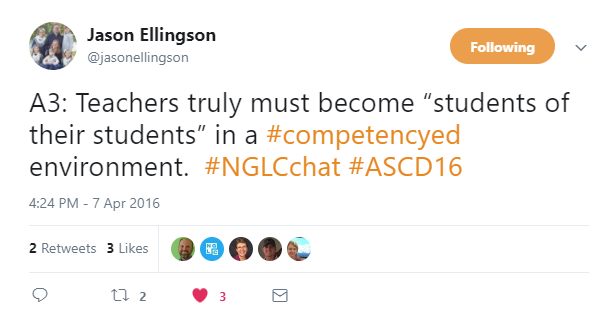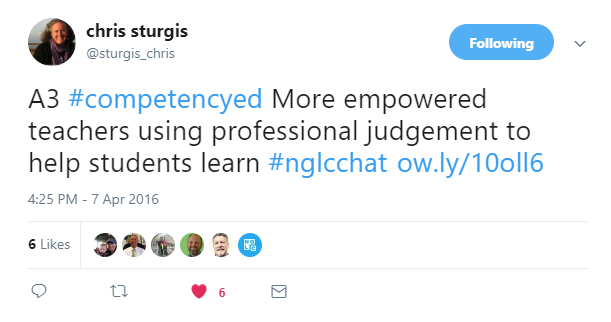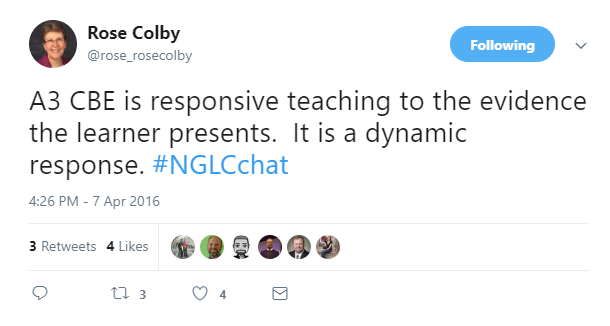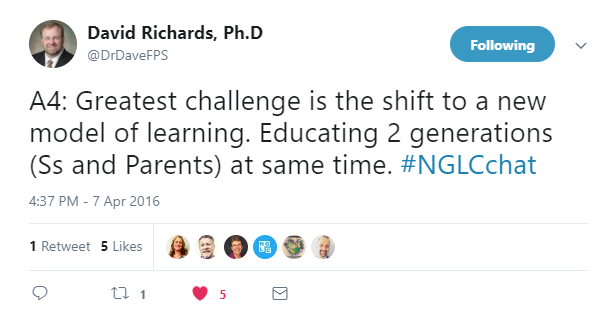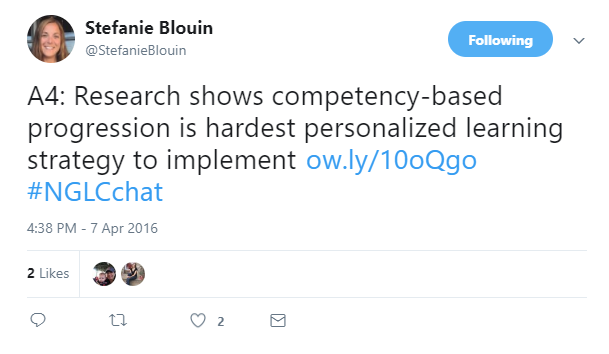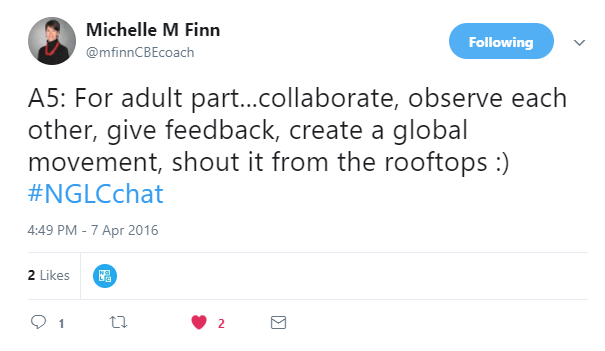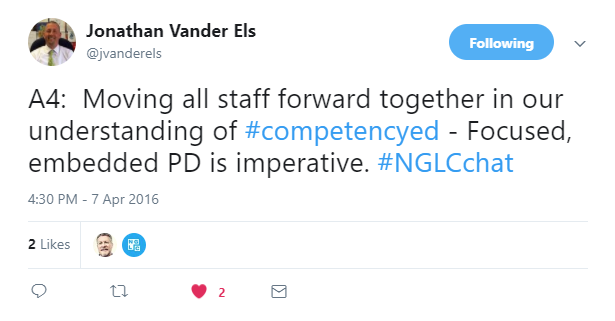New Designs for School
Experts Weigh in on Competency-Based Education
Topics

We’ve all had the experience of truly purposeful, authentic learning and know how valuable it is. Educators are taking the best of what we know about learning, student support, effective instruction, and interpersonal skill-building to completely reimagine schools so that students experience that kind of purposeful learning all day, every day.
Competency-based approaches to learning—where learning becomes stretched by pace and path—are a game-changer for schools focused on deeper learning outcomes.
NGLC’s most recent chat on Competency-based Education drew a large and engaged group of featured guests and participants. I think that’s because competency-based approaches to learning—where learning becomes stretched by pace and path—are a game-changer for schools that are focused on deepening learning outcomes for students. Featured guests and participants tackled five key questions:
1. Competency-based education: what is it, what isn’t it?
2. What components of competency-based education are making a difference for students?
3. How does competency-based education influence or impact the role of teachers and teaching?
4. What is the greatest challenge you’ve experienced as you implemented CBE?
5. What can educators and others do to make competency-education stronger and even better?
Q1. Competency-based education: what is it, what isn't it?
Competency-based education...
- Puts the learner at the center, focuses on growth, and acknowledges that kids are smart in different ways
- Focuses on students reaching proficiency, every step of the way with appropriate supports
- Enables students to progress based on mastery, not by seat time or credits
- Enables student voice, choice, and agency
- Fundamentally restructures the learning process by employing a pedagogical philosophy of instruction and assessment techniques and reporting systems that build upon and leverage students’ learning
Competency-based education is not...
- Computer-based assessment and instruction
- An initiative or new assessment or grading schema
- A single classroom–based approach
- “Just teaching to the standards”
- No pace or unlimited time to reach mastery
Q2. What components of competency-based education are making a difference for students?
- Moving away from a time-based model enables students to learn at their own pace and results in an increase in engagement, lifelong learning, and enduring understanding
- Embracing a culture where mistakes are a celebrated part of learning
- Student agency—students owning their own learning—increases and enables greater personalization and deeper learning
- Students deciding how they want to show their learning is empowering and enduring
Q3. How does competency-based education influence or impact the role of teachers and teaching?
- Collaboration is key—colleague to colleague and teacher to student.
- The purpose and meaning of grades change in a competency-based approach and requires a focus on assessing mastery.
- Competency-based education requires a shift from direct instruction as the primary instructional move.
- It requires a shift from delivery of curriculum to a focus on learning.
- Competency-based education introduces personalized, competency-based learning for teachers.
- It enables teachers to spend more time working with students and enables students to reflect on their learning
Q4. What is the greatest challenge you've experienced as you implemented CBE?
- Enabling policy conditions, district support, and building leadership
- Fostering community, stakeholder, and practitioner engagement and understanding around the shift to competency-based education
- Emphasis on coverage over learning and growth because of state accountability and testing, historically (there are new opportunities, though, with ESSA)
- Hard for teachers to personalize without self-directed learning practices on the part of students
- Fixed mindsets, seeing competency-based education as a technical reform rather than transformational, and ignoring the change in culture
Q5. What can educators and others do to make competency-based education stronger and even better?
- Engage stakeholders and develop a shared understanding of why—why competency-based education is better for learners
- Expand competency-based education beyond place and time-based models to allow students to go where their interests, dreams, and passions take them
- Build a culture of collaboration and growth
- Work in professional learning groups to support each other and leverage what’s working
- Invest the time to change assumptions, values, and approach
- Help educators create solutions for meeting the needs of learners who are two or more years below grade level
- Leaders can support their staff by developing personalized competency-based professional learning opportunities
- Involve students in the design and refinement of competency-based approaches


